"When I saw what Harmony could do with deformers and what that would mean for my rigs, I knew I needed it!"— Davi Costa, Digi Ten
Bob Bennett (Marketing Director at Toon Boom) interviewed Davi Costa and Daniel Bittencourt about their new mobile game at the recent Game Developers Conference 2015.
Two Animators from Brazil
The first thing I noticed when I played Dig A Way was the dog. Usually a dog is cast in the role of a pet, but this time, man's best friend was employed as an informative guide to the game's options. And then there was the dog's moustache. I made a mental note to ask these guys, "Why have a dog with a moustache?"
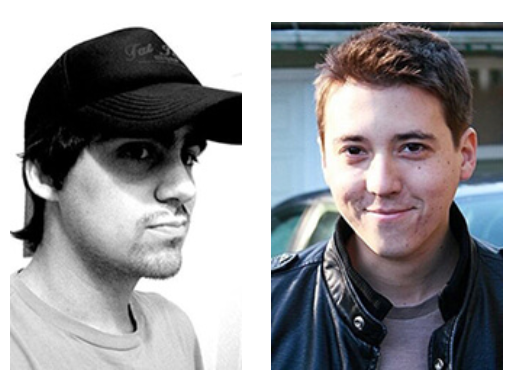
Earlier in the day, two guys named Davi Costa and Daniel Bittencourt approached us breathlessly while we were demoing Harmony in the Unity booth at the GDC 2015 show in San Francisco. "We are shipping our game tomorrow that was entirely built in Harmony!" Costa said. This in itself is not so unusual, but I could see these guys were bursting with enthusiasm at what I can only describe as joyful camaraderie. When they told me that they had been steadily working on the self-financed project for two years, I decided to sit down with them and listen to their story.
Davi Costa is an animator based in Belo Horizonte, Brazil and Daniel Bittencourt lives in Sao Paulo, Brazil. Together they are a game production team called Digi Ten that has been working for two years on a mobile game called Dig A Way. Brazil is a very big place, and I asked them if these two towns were close by each other. "Oh yes, they are about an hour's plane flight away," said Costa, "much faster than driving for four hours."
It turns out that these two guys met eight years ago when they both attended Vancouver Film School (VFS). They had entered and won a student competition while enrolled in the Game Design program. "When we won Best Engine Game of the Year at VFS, that was when we learned we could work together and maybe do something each of us could not do on our own," said Costa. At the time, both were artists – though Bittencourt would later evolve into the programmer half of the team.
Self-funding Their Game
Fast-forward to Brazil where they both returned. I asked them if they had any outside funding for their game over the two years it took to build. "Not at all, in fact we quit our jobs to work on this project after two months of trying to build it on evenings and weekends" said Bittencourt. Wow. How did they get by without paycheques? "Well, we entered a nationwide competition for developing the best educational game and submitted an entry." That sounded like a pretty risky strategy to me. Did they win? "Well, we took eighth place out of 400 entries and we lived on that money for some time." Oh, so this must've been the prototype for their new mobile game! "No, it was where we learned that using Maya to do 2D animation was not going to be viable." Later they added, "We also ended up supplementing our income by building business applications on the side." Clearly they were making their art a priority.
Dig A Way Game Concept
The game they built over the next two years was a real labour of love. Dig A Way is a tile-based puzzle game featuring a jovial older guy in khaki safari gear who digs his way to various kinds of buried treasure. It ships as a universal download that runs on all Apple iOS devices.
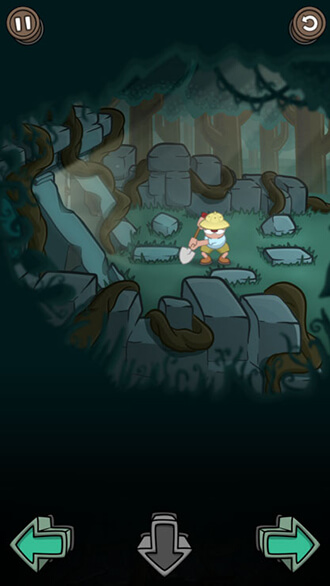
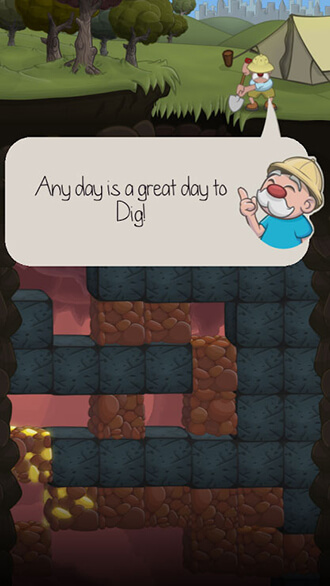
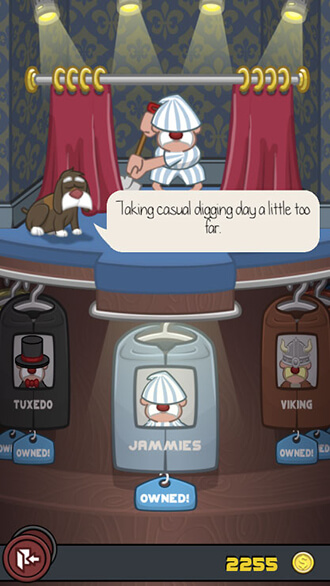
This was my chance to ask about the dog. "Oh, we had this idea that the old guy was actually the son of a famous archaeologist who went missing on an expedition and the sole survivor from the ill-fated trip was his dog," said Costa. "Did the long lost archaeologist happen to sport a mustache?" I asked. "Of course!" he exclaimed. So now I knew why the dog in Dig A Way also had a moustache. He added, "But we decided not to explain everything and let people playing the game use their own imaginations as to who these characters are." I asked about the pig. "It's not a pig, it's a mole." Doh!
Game Development Workflow
All of the art for the game was produced in Toon Boom Harmony. From the backgrounds to the animated characters, the detailed animation was lovingly built and exported from Harmony as PNG files. These images were efficiently grouped into sprite sheets using a program called TexturePacker. They like TexturePacker because it reuses sprites over multiple keyframes and also trims out the alpha channel to save space.
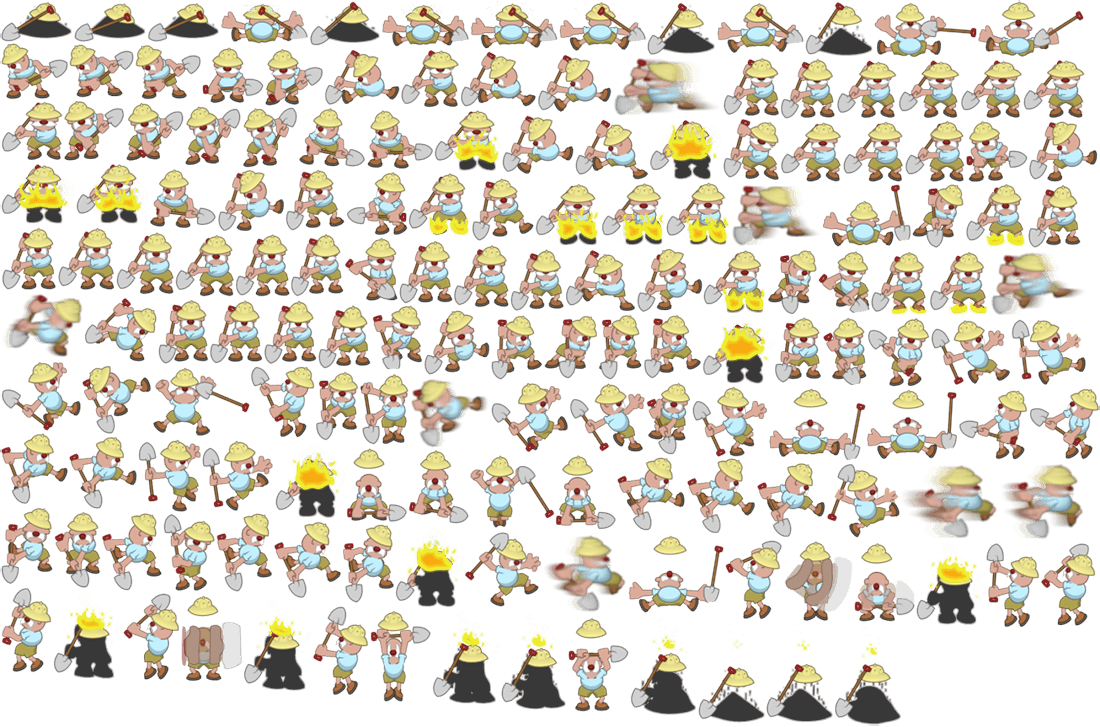

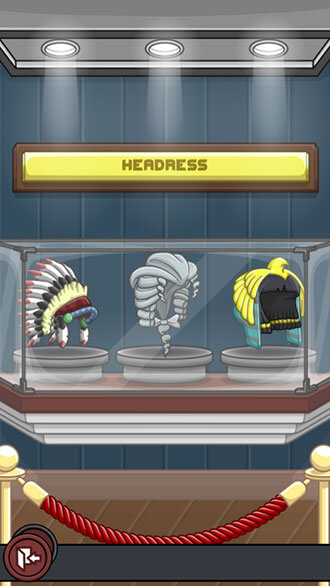
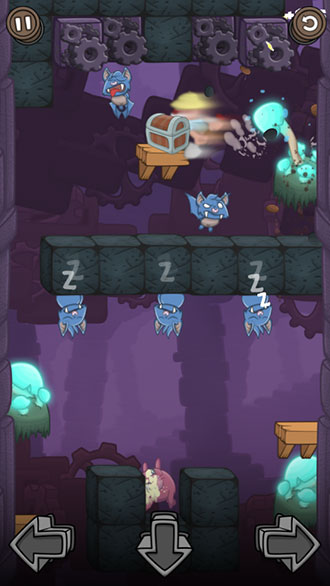
What about the music? At first they tried to cobble together music from various music banks and some homemade sound effects. But they soon realized they wanted to create an original score. An American was hired to compose an original score and a Canadian was hired to handle other sounds including Foley effects. "How did you coordinate such a geographically diverse team?" I asked. "We used Skype a lot, but sometimes it was hard to hear because both of us have dogs." Aha! Their dogs were there throughout the whole process. "My basset hound was essential to the project because he made me get out of my chair and get some fresh air on a walk every few hours," said Bittencourt. "Just like that early scene in 101 Dalmatians," I thought. "The dogs were pretty noisy and sometimes we'd have to say to each other on Skype, ‘You will have to say that last part again because your dog was barking and nobody could concentrate on what you said.'"
I asked Costa how he got started using Toon Boom. It turns out he started using Toon Boom Animate back in 2010. "Things really took off though when I discovered Harmony. When I saw what Harmony could do with deformers and what that would mean for my rigs, I knew I needed it!" I decided to try and gauge his skill level by asking him to rate his Harmony knowledge on a scale of 1 to 10, where 10 is the maximum. "Well, I do not know how to script, but other than that, I would have to say a 10," Costa said with a humble grin. His favourite Harmony feature is using the pencil tool to create lines with adjustable line thickness.
For two years, they persevered. Sometimes they would use Google Hangout and share screens. Other times, Costa and Bittencourt flew to each other's houses, usually for a week, to hang out together for face time. "There is no substitute for being together in the same room at certain stages of game development," Bittencourt noted.
They gradually built up Dig A Way, level after level, world by world. "The first 18 levels in the game are free," said Bittencourt. "After that, you can buy more worlds and also things like new outfits (costumes) for the characters." Eventually they created four worlds with 18 levels each. As you progress up each level, various mechanics are introduced like dynamite, hungry frogs, a mushroom trampoline, sleeping bats, and collapsing caves. The dog is always there to help.
Dig A Way Hits the Apple App Store
As promised, the game went up on the Apple App Store on the second day of GDC (March 2015). They approached us with big smiles on their faces and said, "The game is already trending!" We were genuinely happy for them and I had a new appreciation for how man's best friend can be part of game development.
© Copyright 2000-2025 COGITO SOFTWARE CO.,LTD. All rights reserved. 京ICP备09015132号-52